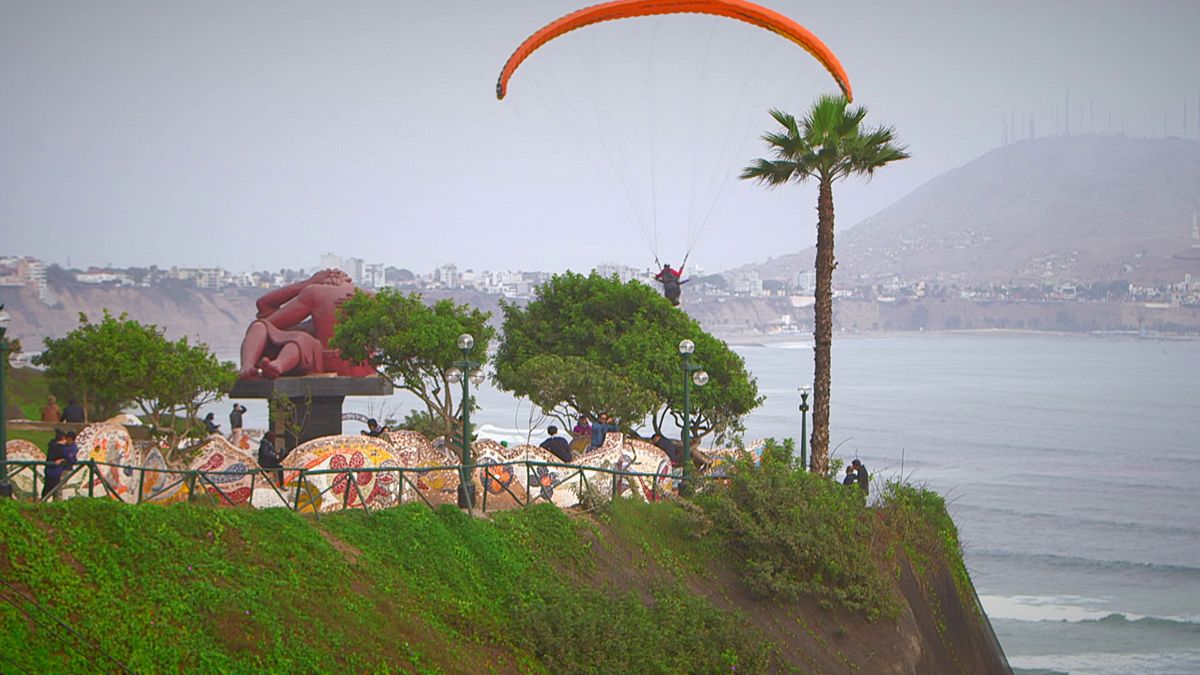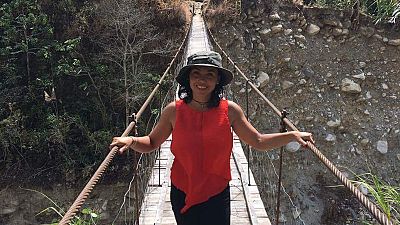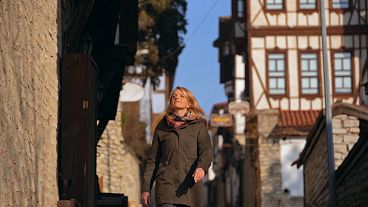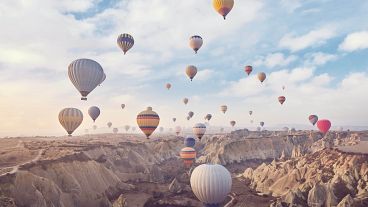Join euronews' Monica Pinna as she stretches out a day in the capital of Peru.
Breathtaking nature and adventure, history and culture…
Monica Pinna, euronews:
“Can you imagine where I am? I’m in Lima, the only South American capital on the Pacific Ocean. Here, people enjoy the water year-round.”
Whether you play in the Pacific breakers or paraglide over the Miraflores district, the Peruvian capital of Lima unveils itself as a multifaceted metropolis.
Officially founded in 1535 by Spanish conquistador Francisco Pizarro, its civilization dates back millennia.
To learn more we met our guide, president of the International Network of Museums for Latin America, in Lima’s main square.
24 hours in Lima
- Lima was founded on the 18th of January 1535 by Spanish conqueror Francisco Pizarro.
- Lima was baptized as Ciudad de los Reyes, as it had to be initially inaugurated on the 6th of January.
- Plaza Mayor, known as Plaza de las Armas is the birthplace of Lima. Among its monuments, the Government Palace, the Cathedral, and the Archbishop’s Palace.
- Lima is the only South American capital on the Pacific Ocean.
Luis Repetto, president of Icom-Lac:
“It’s called Plaza de Armas because in the 17th and 18th century Lima was often attacked by pirates and guns were kept inside the Government Palace. When the alarms sounded, it meant the pirates were approaching and people went to the palace to take the guns to defend the town.”
Monica Pinna:
“Everywhere you look here you see a historical monument.”
Luis Repetto:
“First of all there is the Government Palace, which is the most important political centre in Peru. The last Pre-Hispanic governor’s house was located here.
“Over there, the main key for water was kept, and who controls water, up to now, has the power.”
The pedestrian Jirón de la Unión links Plaza de Armas with another historical square, Plaza San Martìn. For years the road was considered the city’s most aristocratic boulevard, where wealthy citizens met.
Luis Repetto:
“Today this historical centre has an unexpected life because it’s a commercial centre. But, years ago, it was also a social hub. From the 1920s to ’30s, when the music of Bohemia Limeña and Lima’s literature were in their glory, it was said that Lima was the Jirón de la Unión and the Jirón de la Unión was Peru.”
At the entrance of the downtown area, we visit MALI, Lima’s principal fine-art museum. A striking Beaux-Arts building, it was erected in 1872 for the first International Exhibition of Lima and hosts the largest collection of Peruvian art, from past to present.
Natalia Majluf, MALI Director:
“We find pre-Colombian ceramics, paintings of the countryside, Colonial silver works, photography, watercolours and textile drawings of the 20th century. The focus is always the artistic culture and the aesthetic value of the pieces.”
There’s one district that’s a must-see. Barranco. It’s the most artsy corner of Lima, full of colour, with little restaurants and cafés. We meet art expert Maria José Gueudet whose love of the area is obvious.
Maria José Gueudet, Hotel B:
“People who usually lived in the center of Lima came here with their family to these majestic houses to spend the summer months. They were beach houses.”
Monica Pinna:
“This district is quintessentially Bohemian. How many art galleries are there?
Maria José Gueudet:
“We have 24 art galleries and three important museums, and the district is full of little art workshops.”
Maria José is the director of a combined hotel and art gallery in one of the most beautifully restored “casonas” of Barranco.The casonas are elegant Belle Époque-style houses.
Maria José Gueudet:
“This hotel was built in 1914, which makes it 102 years old. It was abandoned for two decades and then restored by Beaux-Art artists. The repairs took three years.”
A Reluctanant Adiós
We didn’t want to leave Lima or its sunset on the Malecón walkway overlooking the Pacific from the Costa Verde cliffs, and we couldn’t return to Europe without experiencing the night sky from the pre-Inca clay pyramid in Miraflores.
Lima has surprised us with its landscapes, its palaces, churches and art galleries. Now we say adiós to the city from one of its impressive archaeological sites, Huaca Pucllana.
In the next episode of Peru Life we travel as far as the Andes to discuss fair trade with coffee and cocoa producers.



